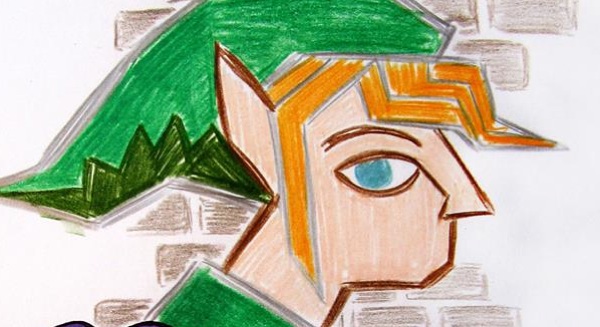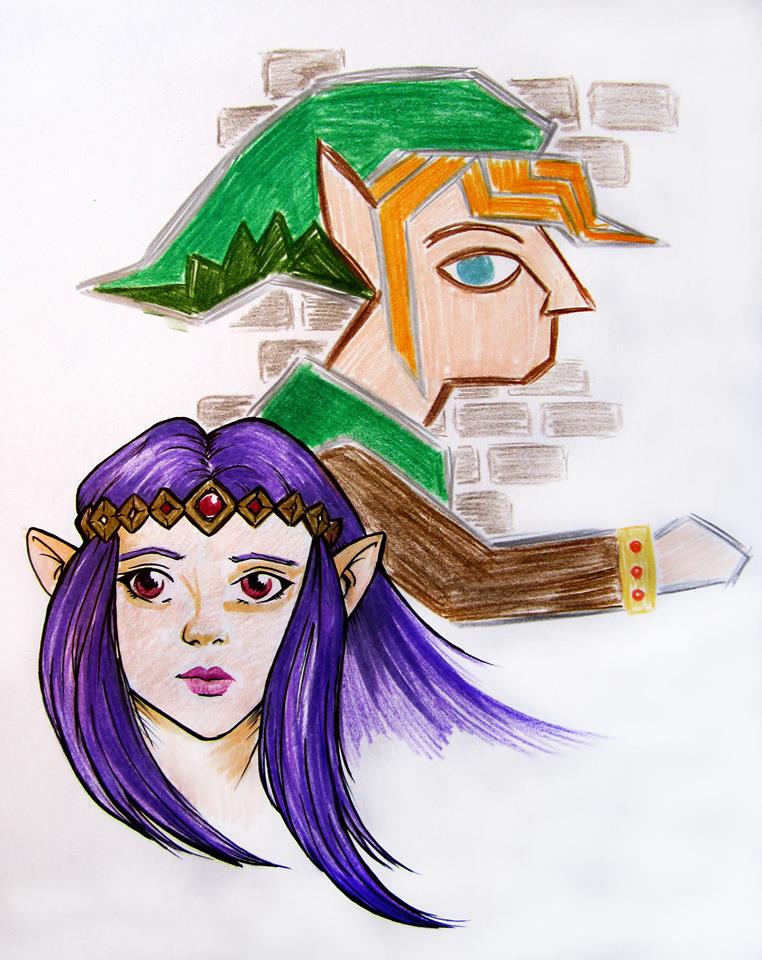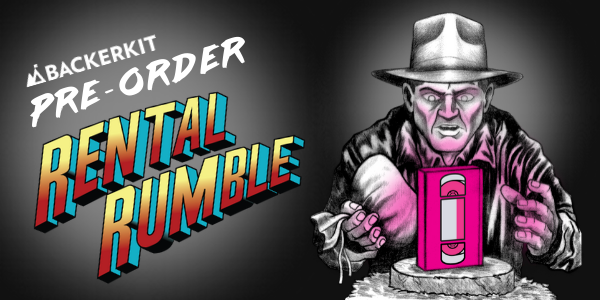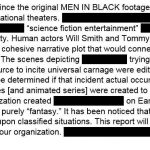THE LEGEND OF ZELDA is a series that has always inspired imagination. In the original LEGEND OF ZELDA the player is dropped into a world with minimal direction. With little more to go on than a cryptic hermit urging “It’s dangerous to go alone! Take this.” gamers were encouraged to equip a modest wooden sword and plunge into the unknown. Since then this approach has undergone numerous refinements and transformations, but the sense of exploration and high adventure remained the thread between all major ZELDA titles.
In the past decade its become difficult to shake the feeling that the ZELDA franchise has slowly lost its sense of immediacy though, and exploration has largely been curtailed in favor of a more prescriptive approach, funneling players from one dungeon to the next. A LINK BETWEEN WORLDS is a game that recalls what early ZELDA games already knew, which is that atmosphere can be woven through something as simple as environmental cues or the sheer joy of interaction. These elements seemed increasingly buried underneath vast landscapes stretched thin for content, or trite narratives playing out through long melodramatic cutscenes. Although there’s a time and place for more involved storytelling or sheer scale there are other ways to communicate an epic journey. After all, what good is a story if its presentation becomes a barrier to good pacing, and what use is the largest map in the world if there aren’t enough meaningful quests to flesh it out? It would seem the designers at Nintendo gave genuine consideration to these questions which have loomed over the series for years and solve multiple dilemmas with a return to the fundamentals.
A LINK BETWEEN WORLDS reaches back to the exceptionally well balanced A LINK TO THE PAST for inspiration. This works mostly in its favor, with snappy pacing and open ended exploration that unfolds with few interruptions. Occasionally the slavish adherence to the SNES game prevents a deeper sense of discovery for those already familiar with this particular incarnation of Hyrule. The biggest deviation is Link’s new ability to merge into walls two-dimensionally, allowing for a new perspective on somewhat familiar surroundings. This power lends some novelty to a world with a healthy dose of cutting and pasting, although your abilities when merged never really progress past walking from side to side, which seems like a bit of a waste.
The precedent already exists from handheld games like LINK”S AWAKENING or the ORACLE OF SEASONS/AGES games, where subsections of dungeons featured modest side scrolling segments. Adding a few more layers of complexity to the merging sequences could have added a lot to the mix, but merging still provides a much appreciated new wrinkle to puzzles and traversal that help set the experience apart from its spiritual predecessor, and while it’s limited in scope it’s integrated throughout in enough fun and creative ways to avoid appearing like a gimmick.
Those who know the map from the LTTP like the back of their hand can expect a pervasive sense of déjà vu when playing the newest adventure. And while the overt references to LTTP can evoke a sense of nostalgia, they have a similar ring to them as the NEW SUPER MARIO BROS. series, which also has a tendency towards the literal when paying homage to the classics. Although the deference to past successes comes across a bit too familiar at times, it succeeds wildly in other regards. The music, for example, is a pitch perfect synthesis of old and new, and the game is infinitely more playable than other recent ZELDA titles. The bulk of melodies are faithful arrangements of well loved tunes, with a few new themes sprinkled in for good measure. It strikes a rare balance between the iconic simplicity of a bygone era and the more lush instrumentation expected of modern titles. Remixes and new jams are both catchy and generally up tempo, perfectly complimenting the overall vibe of the game, which moves along snappily and brims with charming touches.
While the visuals never quite reach the same heights as the music, the use of 3D and playful lighting manage to bring some freshness to what could have otherwise been a stale reproduction of A LINK TO THE PAST’s iconic aesthetic. Boss battles are the area where the benefits of modern hardware are probably felt most deeply, with larger more ambitious designs. There are occasional frame rate stutters here and there which come as a surprise given the pedigree of the game, but mercifully these occurrences are transitory, and the vast bulk of the action runs at a consistent clip.
Arguably the best thing about the game is the lack of barriers between you and the gameplay. A LINK BETWEEN WORLDS wastes no time throwing players into the thick of things. I was relieved to be controlling Link’s fate within minutes, and little touches like a brisk walking speed and the fluidity of analog movement in a world previously confined to an 8 direction grid impressed me. From the get-go the land of Hyrule lets players poke around for loot, and although the game initially limits progression to a handful of beginning dungeons it opens up shortly thereafter, offering a cathartic return to the less linear roots of the series.
The newly rediscovered bent towards open exploration is handled somewhat unconventionally, in spite of the fact that the game is largely a traditional ZELDA experience. As veteran players know progression in ZELDA is defined by the order various items are obtained in, which are usually tied to specific dungeons. Each new power tends to double as a key to access new vistas, nooks, and crannies.
A LINK BETWEEN WORLDS mixes this formula up by making nearly every item accessible very early on. After completing a few obligatory temples Link gains access to a shop run by a mysterious new character, Ravio. Donning a purple rabbit mask, Ravio boldly lays claim to Link’s house where he sets up an item rental shop. Nearly all of the most instrumental items in the game are available from the moment the shop opens. This affords the player the choice to pick and choose their inventory, meaning few areas are truly off limits. The caveat is that Link must first have enough rupees to rent each item individually, and dying means losing any items that you’re carrying.
Initially the new item rental system appears to create an interesting dichotomy. Anyone with the patience to farm rupees could conceivably rent every item at the same time, but they’d be gambling on their ability to stay alive in the face of unknown dangers. Lose a life, and all those hard earned rupees go down the drain. This risk and reward scenario ultimately loses its urgency however. For one, the game is fairly easy (I died once near the beginning, out of sheer inattention). Death rarely poses threat for the well prepared. Secondly, at a certain point the items become available for purchase for an extra fee. If rupees were a rare commodity the shop system might demand tough choices, but rupees are plentiful, and thorough players will quickly find their wallet overflowing with the bright colored gems regardless of how many items they decide to purchase.
Somewhat surprisingly, the ability to gain access to most items at the drop of a hat generally doesn’t diminish the experience by much. While it lacks some of the panache of ZELDA games which strike a more judicious balance between the prescribed path and player choice, it still offers a rewarding sense of achievement. Even with a full array of items at your fingertips A LINK BETWEEN WORLDS manages to give the sense of a slowly unfurling saga, which is an admirable achievement considering that puzzles tend to be limited in scope to accommodate single item solutions.
The highest praise I can give the game is that my final play time was over 30 hours. Not because the main quest was especially long, but because I found myself searching every nook and cranny along the way, experimenting and seeking out each obtainable item until I had 100% completion. This is a far cry from other recent Zelda games, which I’ve alternately dragged myself through out of a perverse sense of obligation, or dropped altogether when the pacing got too tedious to bear. There’s something inherently rewarding about A LINK BETWEEN WORLDS, and although some of the excitement of playing a new ZELDA game is lost in the overwhelming sense of familiarity there’s still lots of pleasant deviations to keep long time fans hooked from start to end. If you have a 3DS and love ZELDA this game is a must own. The tight pacing and flexibility of progression beg for replays, and an extra difficulty mode which unlocks upon completion is the perfect invitation to take another romp and put your skills to the test.
Final Score: 9.5 out of 10


















